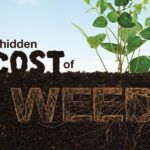Ask the Experts: What You Need to Know About Carbon Credits
Carbon credits encourage sustainable agricultural practices to preserve the environment.

Q. What are carbon credits and why are they important?
A. Jason Neff, Ph.D., soil and climate innovation principal scientist at Syngenta Group: Carbon credits were created as a way to mitigate climate change by encouraging activities that remove carbon dioxide from the atmosphere and storing it for tens to hundreds of years in other forms. Carbon credits can also be generated from practices that avoid the emission of greenhouse gases in the first place. The idea of a carbon credit is that it can be bought and sold to incentivize actions that can help slow climate change. Once a grower generates a carbon credit, then it can be purchased, usually by a company or individuals. These transactions typically take place in voluntary carbon markets made up of the buyers and sellers of carbon credits. In these types of markets, the carbon credits are often called ‘offsets’ because they are used to offset emissions from other sources. For example, when you buy an airplane ticket, you might have an option to ‘offset’ your emissions and it is possible that a farmer somewhere is getting some portion of the revenue for a soil carbon credit.
In agriculture, most carbon storage options are in soils where carbon dioxide is stored as soil organic matter. There are many other sources of greenhouse gases in agriculture, including the energy-intensive production of fertilizers and from the release of nitrous oxide from agricultural soils after fertilization or methane from rice fields or ruminant animals like cattle. Both nitrous oxide and methane are very potent greenhouse gases and reductions in emissions of these gases are also possible sources of carbon credits.
B. Liz Hunt, head, sustainable & responsible business at Syngenta: Carbon credits are important because they may provide a market mechanism for encouraging the adoption of climate-smart agriculture practices such as cover crops or no-till. They may provide an additional revenue stream for growers who decide participation makes sense for their operation.
Additionally, carbon markets are demonstrating that agriculture can be a contributor to positively impacting climate change by reducing or avoiding emissions in production.
Q. What practices do growers need to engage in to earn carbon credits?
A. Neff: The most common practices that generate carbon credits include changes in tillage practices or the addition of cover crops. When a grower transitions from intensive tillage to low or reduced tillage, more carbon is typically held in the soil because the tillage process encourages the breakdown or decomposition of stored soil carbon. Cover crops can help store additional carbon in the soil by increasing the flow of carbon from carbon dioxide in the atmosphere to soil organic matter. These crops also help protect fields from carbon loss from erosion. Beyond these practices, efforts to reduce the use of chemical fertilizers or methane emissions from rice or cattle may also qualify for carbon credits. The current carbon credit space is complicated and varies from country to country and even across some states in the U.S., which often means that growers need to rely on external advice to navigate the current carbon credit system.
B. Hunt: Beyond the cultural production practices that growers can adopt to earn carbon credits, growers need to adopt strong record keeping and, in some cases, robust soil sampling protocols on their operation. Carbon credit generation depends on different levels of data, but for the most part, it will require several years of historical data along with annual in-field practice adoption documentation. Most credits will need to be verified, so keeping records in a credible farm management software that can easily be transferred into the carbon market’s required measuring, monitoring, reporting and verification (MMRV) platform is key.
Q. How do carbon credits programs impact sustainability?
A. Neff: In general, the practices that generate carbon credits also have many other benefits for growers and for the environmental profile of agriculture. For example, by storing more organic matter in soils, growers increase the natural levels of nitrogen and other nutrients, potentially making fields more resilient to climate impacts like drought and less reliant on chemical fertilizers. Reductions in tillage and the addition of cover crops can reduce erosion which has many positive benefits, including maintaining or improving soil fertility and reducing the potential impacts of farming on water quality in nearby waterways.
B. Hunt: Economics are an important component of farm sustainability as well. The additional revenue stream may help to offset some of the costs of new practice adoption or accelerate the addition of more practices. There is a long-term potential to also generate additional ecosystem credits like water quality or quantity and biodiversity as those protocols develop.
Q. Will growers already engaging in these practices still benefit from carbon credit programs?
A. Neff: One of the common concerns for growers considering carbon credit programs is whether they meet the sometimes-complicated rules about what qualifies for a carbon credit. One of the rules involves the concept of ‘additionality’ which means that a carbon credit must be generated from a new activity rather than something that has been going on for a long time. In agriculture, this means that some growers who implemented sustainable practices in the past may not qualify for carbon credits.
B. Hunt: Growers who have already adopted new practices may not be eligible to generate credits — although, I would still encourage them to seek advice from trusted advisors to see if there are other practices or technologies that might be right for them that could continue to be incorporated.
Early adopters of practices can also be great mentors and leaders in this space to share their experiences with other farmers, or to give feedback to companies asking for these practices to be adopted — there are a lot of people out there who don’t know the realities of practice adoption and sharing your knowledge is valuable as well.
Sustainability is all about continuous improvement; I think the voluntary carbon markets are no different. The programs and protocols will continue to improve and hopefully make room for more farmers to participate and generate value for their operation while delivering positive impacts for the environment and society.
Q. What does the future of carbon credits programs look like?
A. Neff: The carbon markets have had many ups and downs in recent years. At present, the price of carbon is relatively low on these markets, but it could rise again in the future. As with many major changes in agriculture and markets, we will likely have to be patient to see what the future holds.
Outside the formal carbon markets, we are seeing opportunities to work directly with food and beverage companies to reduce the overall carbon intensity of agricultural production. These efforts align with the goals of some food companies to reduce emissions as part of their corporate climate commitments. This is important because the rules for these types of changes may be friendlier to growers who are already engaged in a range of sustainable and regenerative practices.
B. Hunt: Sustainability is all about continuous improvement; I think the voluntary carbon markets are no different. The programs and protocols will continue to improve and hopefully make room for more farmers to participate and generate value for their operation while delivering positive impacts for the environment and society.
5 Min Read























